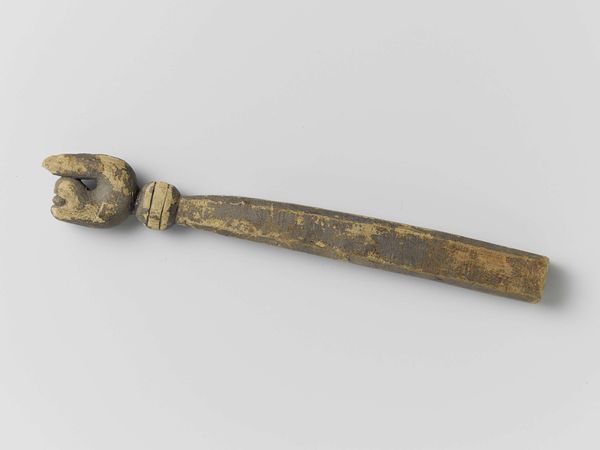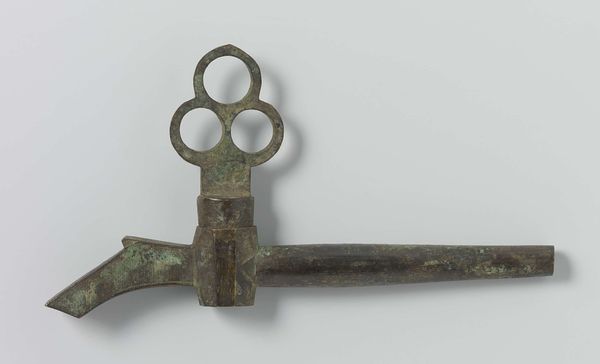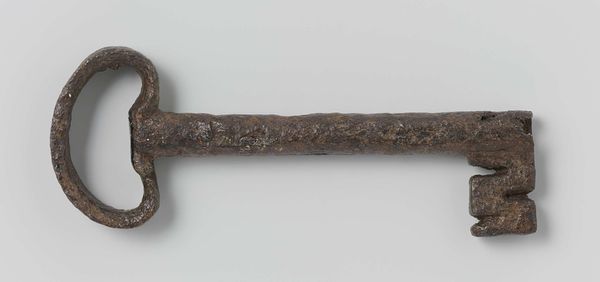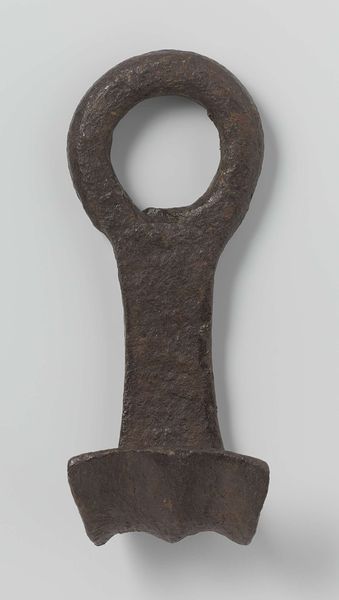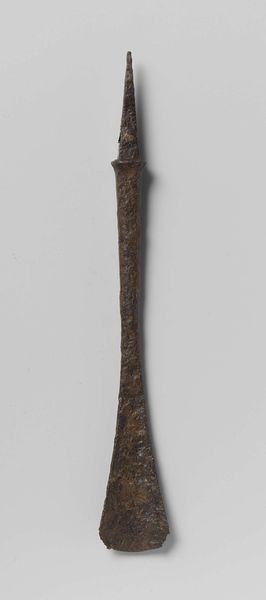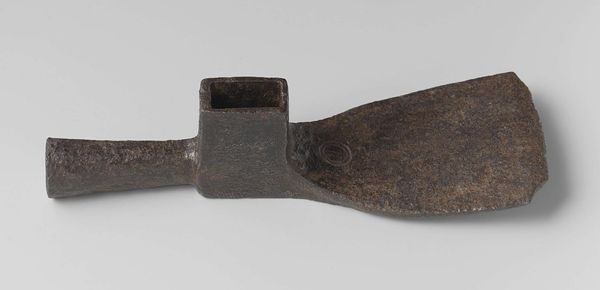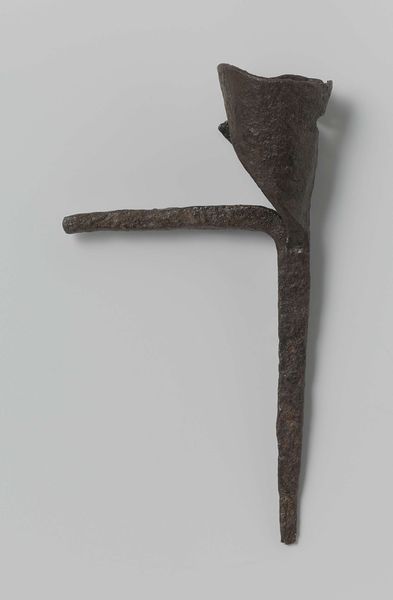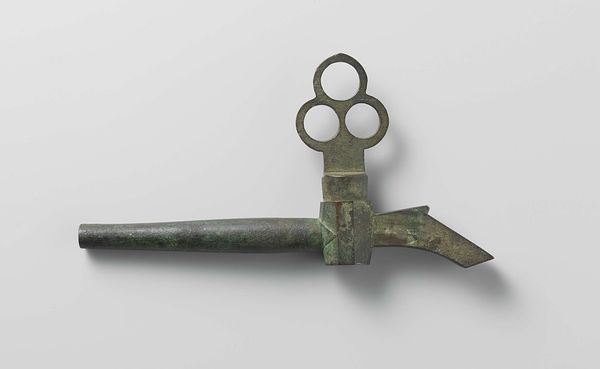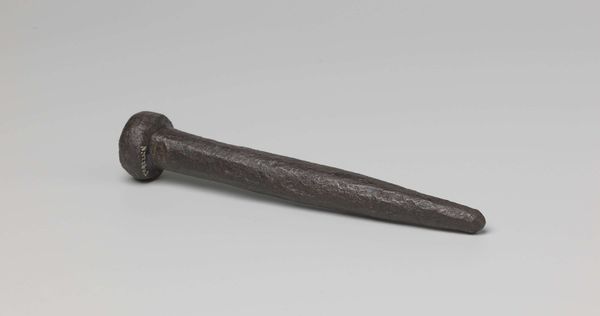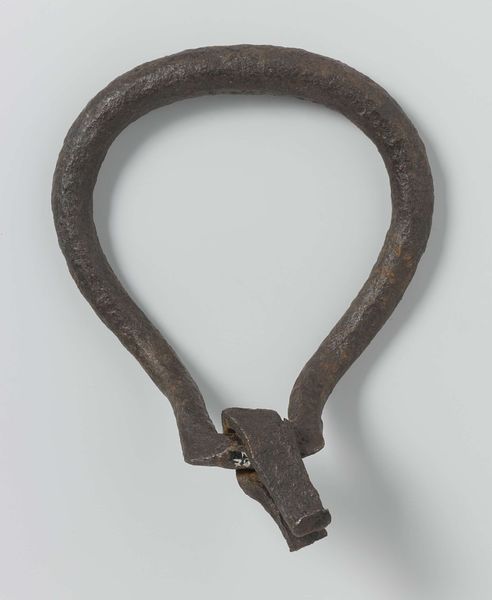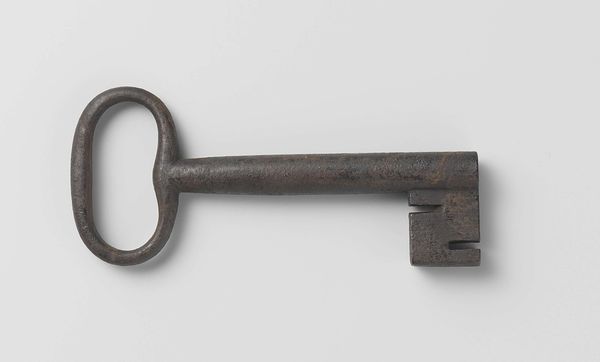
metal, sculpture
#
metal
#
sculpture
#
sculpture
Dimensions: length 7.7 cm, width 3.2 cm, width 1.4 cm
Copyright: Rijks Museum: Open Domain
Curator: What strikes me immediately is how powerfully symbolic something so simple can be. This seemingly humble metal key, entitled "Personal Effects," was crafted sometime between 1590 and 1596 by an anonymous artist and is currently held in the collection of the Rijksmuseum. Editor: A rusty old key! It feels…forgotten. Like it belongs at the bottom of a pirate's chest or maybe clutched in the hand of a long-lost ghost. There’s something melancholic about its texture. Curator: Absolutely, that melancholic resonance is, I think, deeply entwined with its historical and social implications. In the late 16th century, objects such as these served as both literal and metaphorical instruments of control, agency, and exclusion. Who held the key and what power did it give them, what did it protect? And who was kept out? Editor: Right, and keys aren't just functional objects—they represent something precious. Maybe it unlocked a secret garden, a forbidden diary, or even the heart of a loved one! It's weird to think, but I wonder what intimate or vital things were once dependent on this very piece of metal? Curator: Exactly! The very term "personal effects" reframes our understanding. Keys, as mundane as they seem, touched the boundaries of private experience. Reflecting the societal stratification of the period, they demarcated spaces based on class, gender, and often religion, defining who accessed the perceived safety of physical as well as social spaces. Editor: I suppose holding it, you'd feel a weird mix of responsibility and privilege, knowing it safeguards secrets. Curator: Yes, these ordinary, practical objects are always embedded in broader narratives, ones filled with the intricate tensions of everyday life and cultural power dynamics. The concept of accessibility, for instance, remains a critical, and constantly challenged tenet of society today. Editor: Thinking about this humble key makes me see the magic even in dull, old things. Curator: Indeed. A small relic unlocking vast considerations about our intertwined personal and societal past.
Comments
rijksmuseum about 2 years ago
⋮
Each crewman had his own sea chest for his personal belongings. These wooden chests have since perished, only the locks and little keys remain. To kill time, the men made music and played sports. A drumstick and a flute were found on Nova Zembla. The ball is made of whalebone and was used to play ‘kolven’, a kind of hockey. The little comb was used to remove headlice.
Join the conversation
Join millions of artists and users on Artera today and experience the ultimate creative platform.
